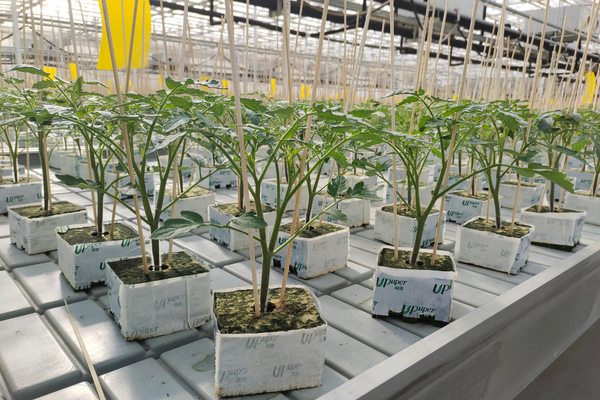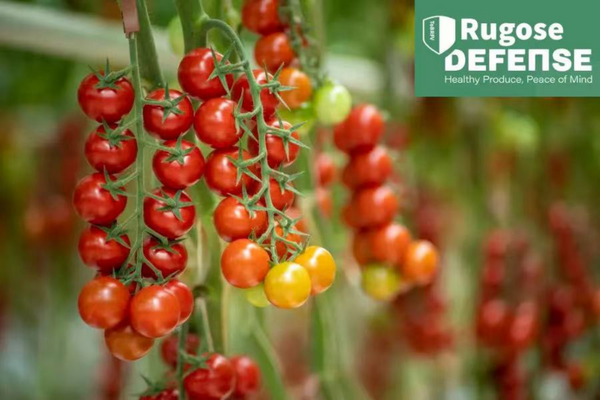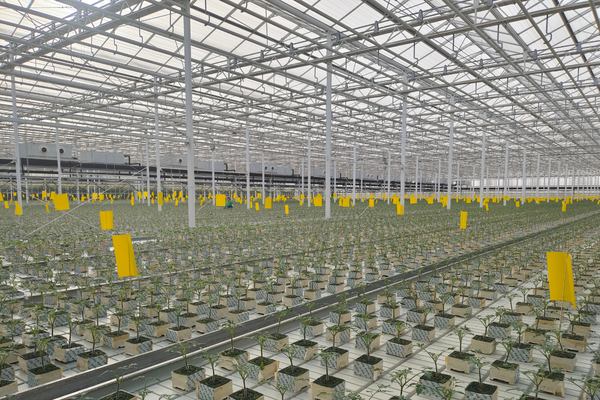Since the "Standards for the Construction of Vegetable Intensive Nursery Farms" was implemented on January 1, 2014, China's seedling production technology and level of automation have improved year by year, and production efficiency and seedling supply have changed. At the same time, with the deepening of digitalized applications, more and more brand-new digitalized seedling nurseries are appearing in the market. What is the current status of vegetable seedling nurseries in China? How big is the gap compared with the more advanced production models in Europe and America? What is the future trend? Recently, Hortidaily invited Mr. Mao Weiping, Manager of Rijk Zwaan China Affairs, and Ms. Xu Fengjiao, Head of Kaisheng Haofeng Agricultural Technology Department, to share some information on the current situation of seedling cultivation in China.
Hortidaily: In recent years, many vegetable seedling nurseries have been built in China. How do you see this trend developing?
Xu(Kaisheng Haofeng): "Disease is a major challenge for traditional seedling nurseries. Traditional ones are limited by factors such as the seedling environment, lack of facilities and equipment, and lack of management technology. It is difficult to meet the production needs of modern smart greenhouses. We have also seen some problems in the market in recent years due to the poor quality of seedlings, and now it is time to reform the seedling nurseries."

"Kaisheng Haofeng has built several modern agricultural parks in China. For us, the high quality and stable supply of seedlings are very important, which is directly related to the final output per square meter. This is why we decided to build our own seedling nurseries. Before this, we did a lot of market research, and it was difficult to find healthy young plants that met our needs. The existing domestic seedling supply capacity cannot match our needs. Kaisheng Haofeng began to plan and design nurseries in 2017 and successively built nurseries in Linyi, Jimo, and Dongying. In August 2022, Kaisheng Haofeng (Laixi) seedling nursery was also officially put into operation. With a total investment of 150 million RMB and an area of 41,000 square meters, it is currently the largest fully automatic and intelligent vegetable seedling nursery in China, which will help solve the problems of seedling diseases and the supply gap. Different from traditional seedling cultivation, we use ultra-small seedling grafting. Traditional seedlings need to grow the seedlings to a large size before grafting, which will affect the later flower bud differentiation and seedling quality, and the difference is obvious during the transplanting process. In addition, we have also achieved a technological breakthrough in the "double-headed double-flower" seedlings, effectively improving the quality of seedlings and saving costs. "

Mao(Rijk Zwaan): "About 15 years ago, seedling nurseries appeared in China, and professional farmers began to change from buying seeds to buying seedlings. With the development of time and the further maturity of planting technologies, growers have put forward higher requirements on the quality of seedlings, the comprehensive capabilities of seedling nurseries, quality control, and the environment. This is a major challenge for seedling nurseries. It can be seen that China has built a lot of new high-tech greenhouses, most of which come from Dutch technologies. The entire planting environment is safe and clean, but most of the varieties used are not resistant to many native viruses. Therefore, high requirements are put forward for the health and safety of seedlings. If the seedlings are contaminated, the impact on greenhouse cultivation is irreversible. Of course, it not only involves seeds and seedlings, but also the quality of workers, disinfection capabilities, and the management level of the greenhouse are all factors that have an impact. "

Hortidaily: Compared with large specialized seedling nurseries in the Netherlands and the United States, what can be improved in China's seedling nurseries?
Xu(Kaisheng Haofeng): "Compared with the large-scale specialized seedling nurseries in the Netherlands and the United States, we still have a certain gap in the operation and management, but technically we can already deliver healthy and strong seedlings like Europe and the United States. So far, Kaisheng Haofeng nurseries have delivered 2 million seedlings. In addition, the advantage of Kaisheng Haofeng is that the management team is very young, the average age is 28.5 years old, and the ability to learn new knowledge is very strong. We also actively arrange for personnel to study in areas with more developed technology, such as the Netherlands and the United States. Through continuous learning and communication, discovering difficulties in the production process on time, our level of management and technology has been continuously improved. "

Mao(Rijk Zwaan): "The seasonal allocation of seedling nurseries, how to maximize the use of space and reduce the idle period is also a major challenge at present. The current situation of nurseries in China is "big but not too big, small but not too small." For example, Shandong is a province with a large supply of vegetables and a large number of nurseries, but most of the supply capacity of vegetable seedlings has not been able to cover other provinces. Due to the obvious seasonal production of seedlings, it is easy to leave equipment idle after the production season. Taking modern nurseries in Europe as an example, they can supply growers within a radius of 1,000 kilometers, but the current supply radius in China is about 200 kilometers, and the maximum is estimated to be 500 kilometers. This is because China's farmers are relatively scattered, mostly small farmers, and professional growers are still developing slowly, and small farmers tend to buy seedlings nearby. Large seedling farms like Kaisheng Haofeng cover a relatively larger area. This situation needs to be solved with the passage of time and changes in the market structure. "
"In addition, tomatoes and eggplants require a lot of grafting, which is basically done manually at present. If automatic grafting can be realized in the future, there will be a lot of market space. In addition, as farmers of open-field planting and simple vegetable greenhouse cultivation turn to high-tech greenhouses, the requirements for high-quality seedlings will increase. "
Manager Xu
